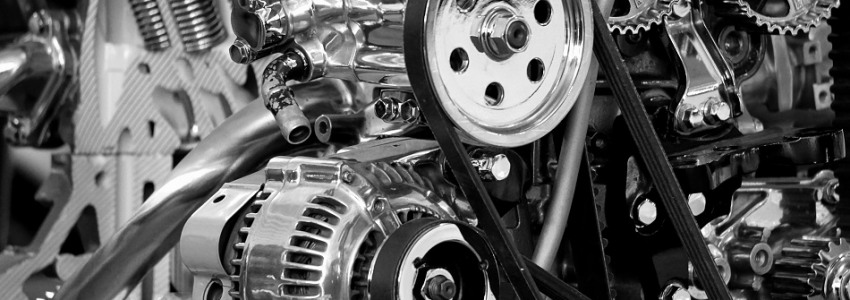
Kitmondo
13 May 2014
This article first appeared in Practical Engineering 1940 Vol1 No4. The information within this article is accurate as of 1940. The piece reviews new equipment employed by the Engineering Industry at the time.
Challenger Series Lathes
For the proprietor of the small engineering shop, where space is limited, and even in large works where a machine capable of dealing accurately with a wide variety of small work is required, the Challenger series of high-precision back-geared screw-cutting lathes offers many advantages. These lathes are manufactured in various types and drives, thus offering the engineer a complete range of small high-precision machines, compact in design and easily installed without the aid of special tools.
The Type A.C.M.N., has a cabinet leg for a totally enclosed motor-drive, and is equipped with a Norton gearbox. This model is also furnished with an automatic longitudinal cross feed. The basic type, however, is the standard plain screw-cutting and turning bench lathe, arranged for countershaft drive. As a third alternative, there is the Type A.G.L., which is mounted on two sturdy floor legs and arranged for countershaft drive.
Standardised Components
In the essential details, therefore, these lathes are basically similar, and it has been the policy of the manufacturers to standardise the components of all three models so that complete machines, having many desirable features, can be turned out on a production basis, thus keeping the price down to a comparatively low level. Each machine is tested before leaving the works, however, and carries a guarantee of accuracy.
For the purposes of this review, it is proposed to deal with the Type A.C.M.N., although with the alterations already indicated, the same description can be made to apply to either of the other models. The bed of the machine is of the Vee-webbed, non-gapped type, giving a very rigid construction and great strength. There are two flat and two Vee ways, on which the headstock, tailstock and saddle are arranged to give accurate alignment on the machine.
Construction Details
The spindle is made from 45-ton high tensile steel, accurately machined all over, and having a lin. bore. The spindle bearings are bronzed, and fitted to the spindle by scraping. The tailstock, which is of heavy construction, can be set over for taper turning, and is fitted with a modern locking arrangement to secure it to the bed without altering the alignment of the centres.
The bearing surface of the saddle is 10in in length. It has extensions at both ends and is fitted with oil wipers at both back and front to clean the ways. The saddle carries a compound slide with wide Vee guides for sliding.
At the end of the saddle, and permanently fitted, is the thread-chasing dial, which is graduated and numbered to enable all threads to be cut accurately. Both the longitudinal and cross feeds are of the power-operated type, and are actuated by means of a splined lead-screw through a worm and worm-wheel, a friction clutch giving positive operations in both directions.
When fitted with feed-box, three different rates of feed—coarse, medium and fine— are available and changes can be made instantaneously. The traverse and cross-feed can, of course, also be operated by hand, and the collars on the cross-feed screws and compound slide screw is graduated for .001in.
The headstock of this machine is of the bowl type, amply ribbed, and with robust bearings to take the main spindle. It is supported on the bed on one Vee and one flat way—an arrangement which ensures the most accurate alignment. In the case of the model under review, the three-step cone pulley is covered by a detachable plate which can be removed if, for any reason, it is desired to connect up the machine to a countershaft. The cone pulley, in combination with the back gears—which are totally enclosed—gives a range of six spindle speeds.
Screw-Cutting
For screw-cutting work, the lathe under review is fitted with a Norton quick-change gearbox giving 48 changes of rate of feed, and this makes the machine suitable for cutting all standard screw threads from two to 112 t.p.i. There is also a wide range of feeds for longitudinal operation on plain work. In the case of the bench model lathe previously mentioned, change wheels for cutting both Whitworth and metric threads are supplied.
The standard equipment of this machine includes the countershaft and driving plate, change wheels, two morse taper centres and one morse taper sleeve, spanner and key, and a screw-cutting chart. Extra equipment is available if desired, and this includes such items as a universal 4-jaw faceplate, a 5in. gear scroll chuck, a fixed steady and a collet attachment with collets.
















